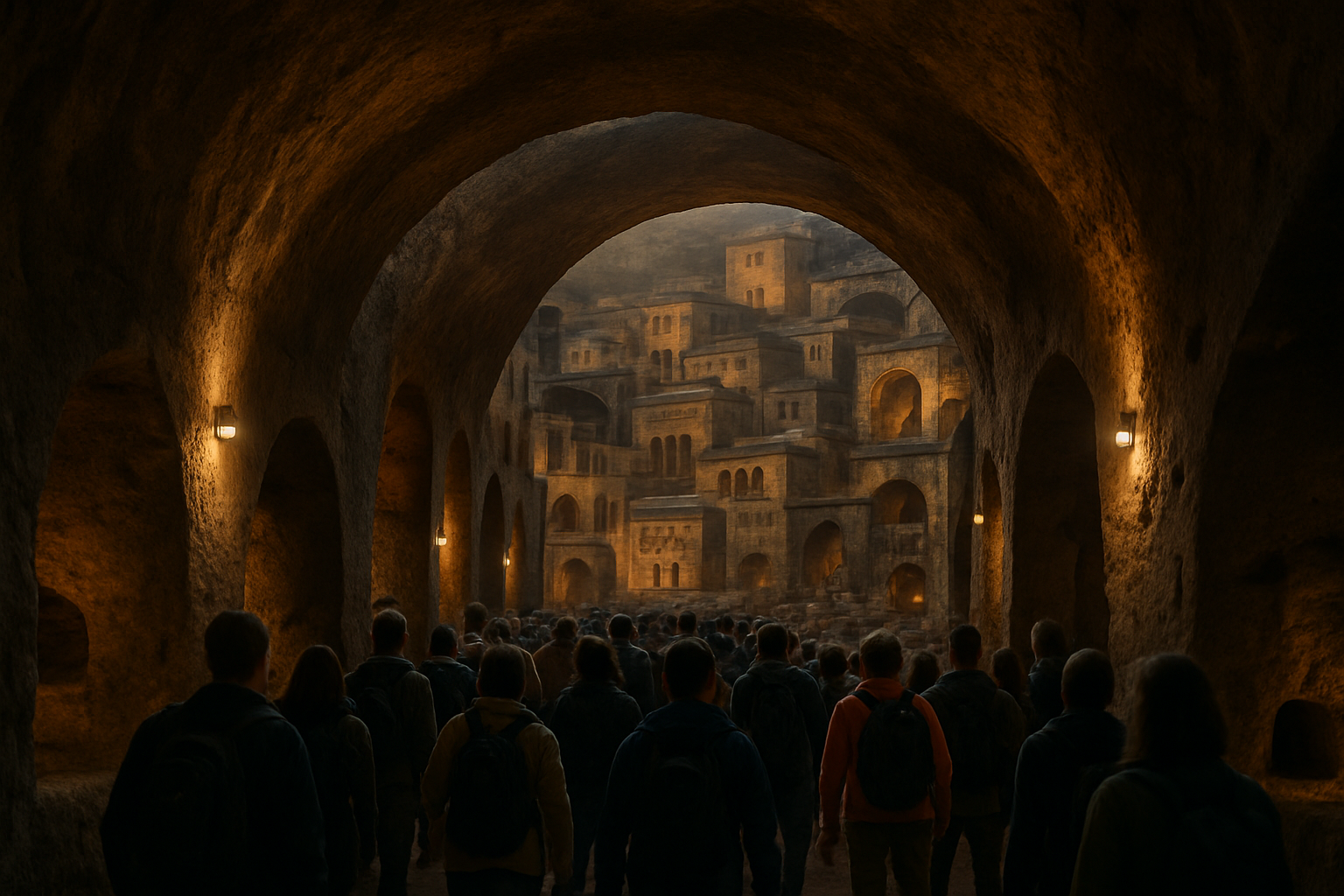Navigating the Underground: A Journey Through Subterranean Cities
The world beneath our feet holds secrets and wonders that few have explored. From ancient catacombs to modern marvels of engineering, subterranean cities offer a glimpse into the hidden layers of human civilization. These underground realms, often overlooked by traditional travelers, are now emerging as fascinating destinations for those seeking unique experiences. Join us as we delve into the depths of the earth to discover the allure of subterranean cities and the rich tapestry of history, culture, and innovation they represent.

In recent years, there has been a growing interest in exploring and developing subterranean spaces. This renewed focus is driven by factors such as urban population growth, the need for sustainable development, and a desire to preserve surface land for green spaces. Today, subterranean cities range from historical sites that offer glimpses into the past to futuristic complexes that showcase cutting-edge urban planning and architecture.
A Journey Through Time: Historical Subterranean Cities
Some of the most captivating subterranean cities are those with deep historical roots. Derinkuyu in Cappadocia, Turkey, is an ancient underground city that could accommodate up to 20,000 people. Dating back to the 7th or 8th century BCE, this multi-level city features living quarters, stables, churches, and storage areas, all connected by a network of tunnels. Exploring Derinkuyu offers a unique perspective on ancient engineering and the ingenuity of our ancestors.
Another remarkable example is the city of Edinburgh, Scotland, which boasts a hidden underground world beneath its streets. The Edinburgh Vaults, a series of chambers formed in the arches of the South Bridge, were once home to businesses and residences in the 18th century. Today, visitors can take guided tours to learn about the vaults’ colorful history, from legal trades to more nefarious activities.
Modern Marvels: Contemporary Underground Developments
While historical sites offer fascinating glimpses into the past, modern subterranean developments showcase innovative approaches to urban planning and sustainability. In Montreal, Canada, the RÉSO (commonly known as the Underground City) is a vast network of interconnected office towers, shopping malls, hotels, and transit stations spanning over 32 kilometers. This climate-controlled environment allows residents and visitors to navigate the city comfortably, even during harsh winter months.
In Helsinki, Finland, the Underground Master Plan has led to the development of over 400 underground facilities, including sports venues, data centers, and storage spaces. This forward-thinking approach to urban planning maximizes land use while preserving the city’s surface for green spaces and public areas.
The Challenges and Advantages of Subterranean Living
While subterranean cities offer unique solutions to urban challenges, they also present their own set of obstacles. One of the primary concerns is the psychological impact of spending extended periods underground. Lack of natural light and limited access to outdoor spaces can affect mental health and well-being. To address these issues, designers and architects are developing innovative lighting systems and incorporating elements of nature into underground spaces.
Despite these challenges, subterranean developments offer several advantages. They provide protection from extreme weather conditions, reduce energy consumption for heating and cooling, and can help preserve historical buildings by relocating certain functions underground. Additionally, underground spaces can serve as emergency shelters during natural disasters or other crises.
The Future of Underground Urban Planning
As urban populations continue to grow and available surface land becomes scarcer, subterranean development is likely to play an increasingly important role in city planning. Visionary projects like Elon Musk’s The Boring Company aim to create networks of underground tunnels for high-speed transportation, potentially revolutionizing urban mobility.
In Singapore, plans are underway to develop an Underground Master Plan, which will map out the city-state’s subterranean spaces and their potential uses. This initiative aims to optimize land use and create a more sustainable urban environment by moving certain facilities, such as storage and industrial processes, below ground.
Exploring the Depths: Tips for Subterranean Travelers
• Research the history and significance of underground sites before visiting to enhance your experience
• Bring appropriate clothing and footwear, as underground environments can be cool and damp
• Consider guided tours for access to restricted areas and expert insights
• Be mindful of claustrophobia or other sensitivities to enclosed spaces
• Respect preservation efforts and follow all guidelines to help protect these unique environments
• Look for opportunities to experience modern subterranean developments, such as underground shopping centers or transit hubs
• Capture your underground adventures responsibly, being aware of photography restrictions in some locations
As we continue to push the boundaries of urban development and explore new frontiers in travel, subterranean cities offer a fascinating glimpse into both our past and our future. These hidden realms challenge our perceptions of space and invite us to reconsider the potential that lies beneath the surface of our cities. By venturing into these underground worlds, we gain a deeper appreciation for human ingenuity and the endless possibilities of urban design. The next time you find yourself in a city with subterranean spaces, take a moment to descend and discover the wonders that await in the world below.





